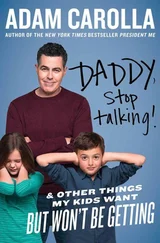It’s as if, like Eleanor Roosevelt, they can’t help but feel what others feel.
* * *
In 1921, FDR contracted polio. It was a terrible blow, and he considered retiring to the country to live out his life as an invalid gentleman. But Eleanor kept his contacts with the Democratic Party alive while he recovered, even agreeing to address a party fund-raiser. She was terrified of public speaking, and not much good at it—she had a high-pitched voice and laughed nervously at all the wrong times. But she trained for the event and made her way through the speech.
After that, Eleanor was still unsure of herself, but she began working to fix the social problems she saw all around her. She became a champion of women’s issues and forged alliances with other serious-minded people. By 1928, when FDR was elected governor of New York, she was the director of the Bureau of Women’s Activities for the Democratic Party and one of the most influential women in American politics. She and Franklin were now a fully functioning partnership of his savoir faire and her social conscience. “I knew about social conditions, perhaps more than he did,” Eleanor recalled with characteristic modesty. “But he knew about government and how you could use government to improve things. And I think we began to get an understanding of teamwork.”
FDR was elected president in 1933. It was the height of the Depression, and Eleanor traveled the country—in a single three-month period she covered 40,000 miles—listening to ordinary people tell their hard-luck stories. People opened up to her in ways they didn’t for other powerful figures. She became for Franklin the voice of the dispossessed. When she returned home from her trips, she often told him what she’d seen and pressed him to act. She helped orchestrate government programs for half-starved miners in Appalachia. She urged FDR to include women and African-Americans in his programs to put people back to work. And she helped arrange for Marian Anderson to sing at the Lincoln Memorial. “She kept at him on issues which he might, in the rush of things, have wanted to overlook,” the historian Geoff Ward has said. “She kept him to a high standard. Anyone who ever saw her lock eyes with him and say, ‘ Now Franklin, you should …’ never forgot it.”
The shy young woman who’d been terrified of public speaking grew to love public life. Eleanor Roosevelt became the first First Lady to hold a press conference, address a national convention, write a newspaper column, and appear on talk radio. Later in her career she served as a U.S. delegate to the United Nations, where she used her unusual brand of political skills and hard-won toughness to help win passage of the Universal Declaration of Human Rights.
She never did outgrow her vulnerability; all her life she suffered dark “Griselda moods,” as she called them (named for a princess in a medieval legend who withdrew into silence), and struggled to “develop skin as tough as rhinoceros hide.” “I think people who are shy remain shy always, but they learn how to overcome it,” she said. But it was perhaps this sensitivity that made it easy for her to relate to the disenfranchised, and conscientious enough to act on their behalf. FDR, elected at the start of the Depression, is remembered for his compassion. But it was Eleanor who made sure he knew how suffering Americans felt .
* * *
The connection between sensitivity and conscience has long been observed. Imagine the following experiment, performed by the developmental psychologist Grazyna Kochanska. A kind woman hands a toy to a toddler, explaining that the child should be very careful because it’s one of the woman’s favorites. The child solemnly nods assent and begins to play with the toy. Soon afterward, it breaks dramatically in two, having been rigged to do so.
The woman looks upset and cries, “Oh my!” Then she waits to see what the child does next.
Some children, it turns out, feel a lot more guilty about their (supposed) transgression than others. They look away, hug themselves, stammer out confessions, hide their faces. And it’s the kids we might call the most sensitive, the most high-reactive, the ones who are likely to be introverts who feel the guiltiest. Being unusually sensitive to all experience, both positive and negative, they seem to feel both the sorrow of the woman whose toy is broken and the anxiety of having done something bad. (In case you’re wondering, the woman in the experiments quickly returned to the room with the toy “fixed” and reassurances that the child had done nothing wrong.)
In our culture, guilt is a tainted word, but it’s probably one of the building blocks of conscience. The anxiety these highly sensitive toddlers feel upon apparently breaking the toy gives them the motivation to avoid harming someone’s plaything the next time. By age four, according to Kochanska, these same kids are less likely than their peers to cheat or break rules, even when they think they can’t be caught . And by six or seven, they’re more likely to be described by their parents as having high levels of moral traits such as empathy. They also have fewer behavioral problems in general.
“Functional, moderate guilt,” writes Kochanska, “may promote future altruism, personal responsibility, adaptive behavior in school, and harmonious, competent, and prosocial relationships with parents, teachers, and friends.” This is an especially important set of attributes at a time when a 2010 University of Michigan study shows that college students today are 40 percent less empathetic than they were thirty years ago, with much of the drop having occurred since 2000. (The study’s authors speculate that the decline in empathy is related to the prevalence of social media, reality TV, and “hyper-competitiveness.”)
Of course, having these traits doesn’t mean that sensitive children are angels. They have selfish streaks like everyone else. Sometimes they act aloof and unfriendly. And when they’re overwhelmed by negative emotions like shame or anxiety, says Aron, they can be positively oblivious of other people’s needs.
But the same receptivity to experience that can make life difficult for the highly sensitive also builds their consciences. Aron tells of one sensitive teen who persuaded his mother to feed a homeless person he’d met in the park, and of another eight-year-old who cried not only when she felt embarrassed, but also when her peers were teased.
We know this type of person well from literature, probably because so many writers are sensitive introverts themselves. He “had gone through life with one skin fewer than most men,” the novelist Eric Malpass writes of his quiet and cerebral protagonist, also an author, in the novel The Long Long Dances . “The troubles of others moved him more, as did also the teeming beauty of life: moved him, compelled him, to seize a pen and write about them. [He was moved by] walking in the hills, listening to a Schubert impromptu, watching nightly from his armchair the smashing of bone and flesh that made up so much of the nine o’clock news.”
The description of such characters as thin-skinned is meant metaphorically, but it turns out that it’s actually quite literal. Among the tests researchers use to measure personality traits are skin conductance tests, which record how much people sweat in response to noises, strong emotions, and other stimuli. High-reactive introverts sweat more; low-reactive extroverts sweat less. Their skin is literally “thicker,” more impervious to stimuli, cooler to the touch. In fact, according to some of the scientists I spoke to, this is where our notion of being socially “cool” comes from; the lower-reactive you are, the cooler your skin, the cooler you are . (Incidentally, sociopaths lie at the extreme end of this coolness barometer, with extremely low levels of arousal, skin conductance, and anxiety. There is some evidence that sociopaths have damaged amygdalae.)
Читать дальше
![Сьюзан Кейн Quiet [The Power of Introverts in a World That Can't Stop Talking] обложка книги](/books/33084/syuzan-kejn-quiet-the-power-of-introverts-in-a-wo-cover.webp)











